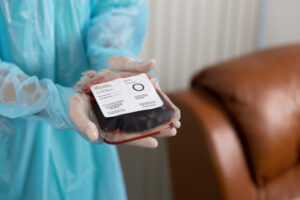The World Health Organization (WHO) considers blood an essential medicine, yet nearly two-thirds of countries—primarily low- and middle-income countries (LMIC)—lack sufficient blood supplies to meet clinical demands. Since 1971, WHO guidelines have recommended collecting at least 10 units of blood per 1000 individuals, based on a crude approximation of a population’s needs and hospital beds. However, these guidelines do not account for demographics, economics, or the local epidemiology of specific diseases associated with greater need for transfusion. In addition, transfusion patterns have changed over the past 50 years due to changes in types of medical procedures, hemoglobin thresholds for transfusions, blood collection and storage methods, and the availability of alternative blood products. Recently published in both The New England Journal of Medicine and The Lancet, specialists in transfusion medicine are calling for an improved understanding of each country’s and region’s individualized blood demands. Epidemiological data are needed on the prevalence of the most frequent medical conditions and procedures that require transfusion of blood components (e.g. sickle cell disease, malaria infection, trauma, obstetric hemorrhage, etc). In addition, challenges related to donor retention, inappropriate use of blood, and funding for safe blood collection and transfusions in LMIC need to be addressed. A transition to individualized, data-driven models for blood donations could help facilitate strategic economic investments and stabilize the global blood supply.
References:
- Jacobs JW, Bates I, M’baya B, Eichbaum Q, Louw VJ, Al-Riyami AZ, Tayou C, Wendel S, Tobian AAR, Bloch EM. Ensuring a Safe and Sufficient Global Blood Supply. N Engl J Med. 2024
- Jacobs JW, Bates I, Cohn CS, Choudhury N, Owusu-Ofori S, Vrielink H, Patel EU, Wendel S, Tobian AAR, Bloch EM. The global blood donation index: an imperfect measure of transfusion need. Lancet. 2024

